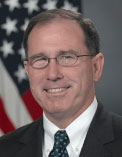A Tough Call, the Right Call
While The Times article is generally sympathetic to Miller's claim that General Kelly's decision was "absolute censorship"
I took pictures of something they didn't like, and they removed me. Deciding what I can and cannot document, I don't see a clearer definition of censorship.
and evokes the now standard-issue Vietnam War comparison,
If the conflict in Vietnam was notable for open access given to journalists - too much, many critics said, as the war played out nightly in bloody newscasts - the Iraq war may mark an opposite extreme: after five years and more than 4,000 American combat deaths, searches and interviews turned up fewer than a half-dozen graphic photographs of dead American soldiers.
credit must be given to the authors, Michael Kamber and Tim Arango, for presenting the bottom-line concerning this dust-up (bolded emphasis by SWJ):
It is a complex issue, with competing claims often difficult to weigh in an age of instant communication around the globe via the Internet, in which such images can add to the immediate grief of families and the anger of comrades still in the field.
While the Bush administration faced criticism for overt political manipulation in not permitting photos of flag-draped coffins, the issue is more emotional on the battlefield: local military commanders worry about security in publishing images of the American dead as well as an affront to the dignity of fallen comrades. Most newspapers refuse to publish such pictures as a matter of policy.
But opponents of the war, civil liberties advocates and journalists argue that the public portrayal of the war is being sanitized and that Americans who choose to do so have the right to see - in whatever medium - the human cost of a war that polls consistently show is unpopular with Americans.
Those who know General Kelly will tell you -- he is the consummate professional - and would not take such action lightly. As a commander in combat, responsible for the lives of thousands of US and Iraqi military personnel and civilians -- as well as protecting the emotional well-being and privacy rights of the families of his Marines, he made a tough call -- the right call.
Times have changed, this ain't Vietnam, in this era of global instantaneous communication it would be foolish to cede the 'war of ideas' to our murderous adversaries by presenting them propaganda fodder, presenting those same murderers with near real-time "battlefield damage assessment" and assume away the notion that family members will never receive notification of a loved-ones death via an Internet image or blog post. This is just plain common sense as well as common decency.
Miller is a very talented photographer and should be admired for his courage to go in harm's way in pursuit of his chosen profession. He should recognize that equally talented and courageous professionals are tasked with a responsibility well beyond that of an independent photojournalist -- they make the day-to-day tough decisions and move on to other pressing matters. Miller and his cheerleaders should do likewise.



